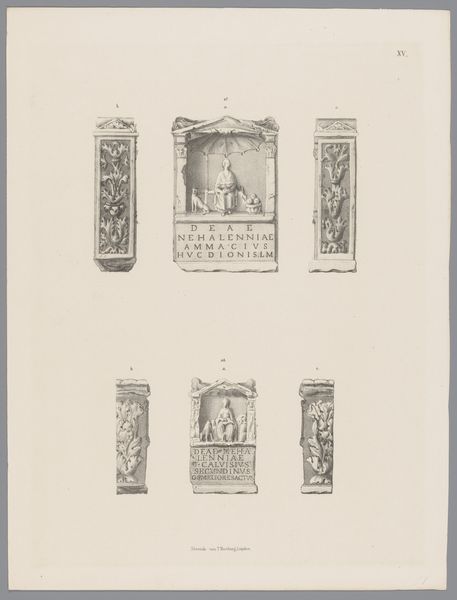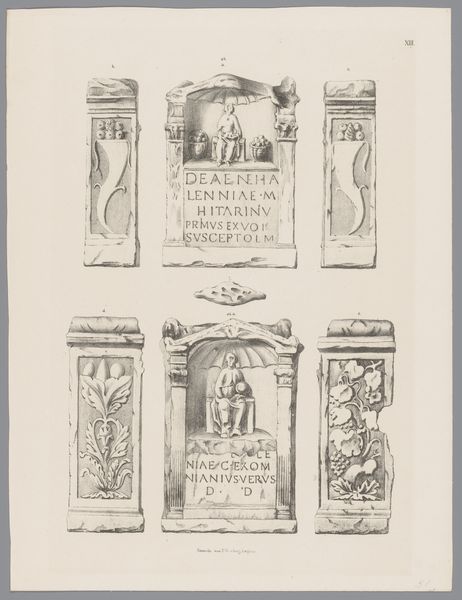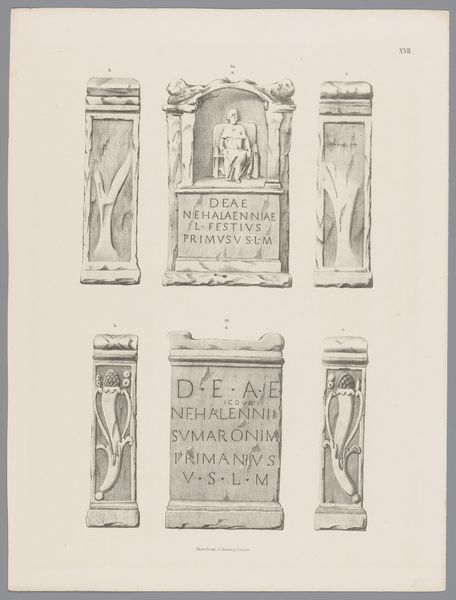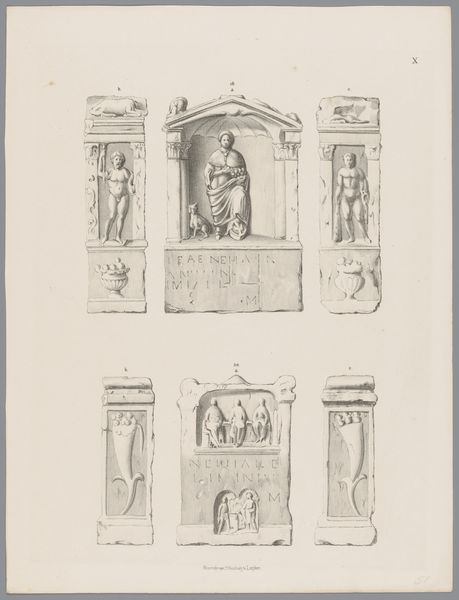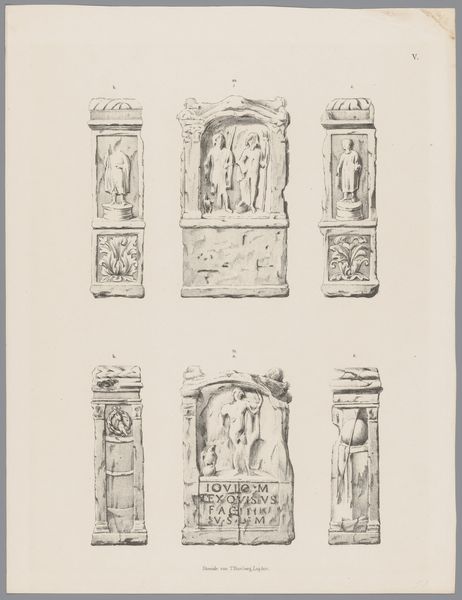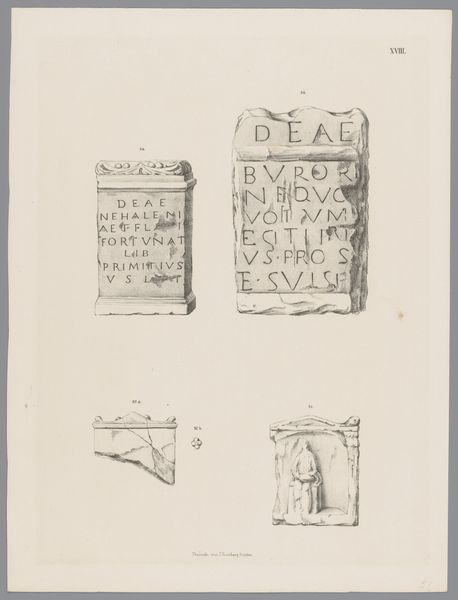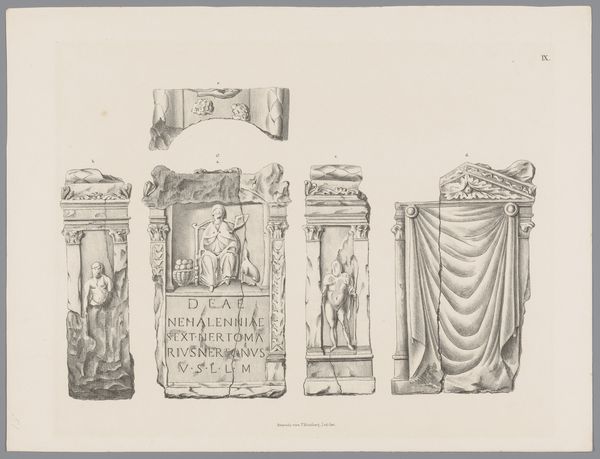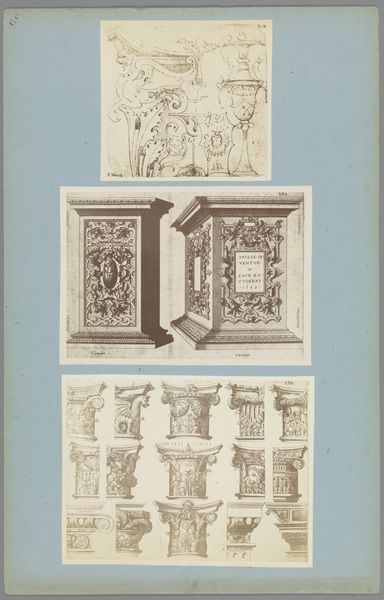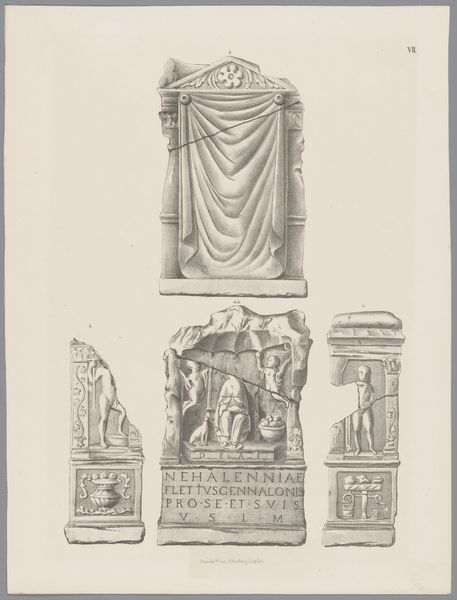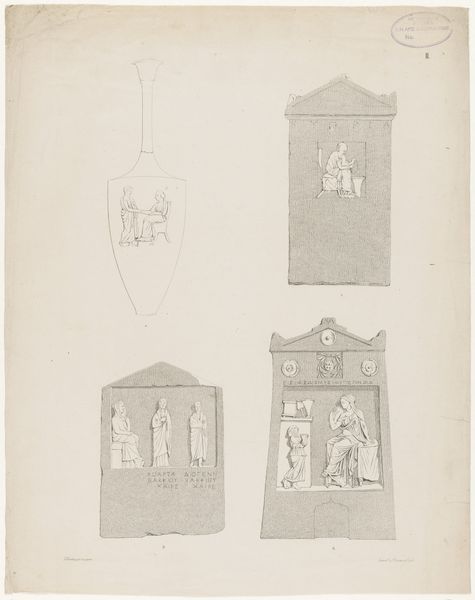
print, relief, engraving
# print
#
relief
#
figuration
#
ancient-mediterranean
#
history-painting
#
engraving
Dimensions: height 360 mm, width 270 mm
Copyright: Rijks Museum: Open Domain
Tiemen Hooiberg made this print of two Nehalennia altars, but the altars themselves are much older, dating back to the Roman period. The originals are made of stone, carefully carved with details of figures, columns, and dedicatory inscriptions. The goddess Nehalennia was worshipped by people involved in trade and seafaring, which tells us something about the economy of the time. These altars weren't mass-produced; each one required a significant investment of time and skill by stone carvers. The degree of detail suggests specialized labor, with workshops dedicated to creating these religious objects. In their original painted state, the amount of labour involved in their creation would have been even more apparent. Hooiberg's print captures these details, but flattens the three-dimensional carvings into a two-dimensional image. Consider how this changes our understanding of the altars, reducing their status to that of mere historical documents. It really highlights how the act of making – whether carving stone or creating a print – imbues an object with meaning far beyond its surface appearance.
Comments
No comments
Be the first to comment and join the conversation on the ultimate creative platform.
